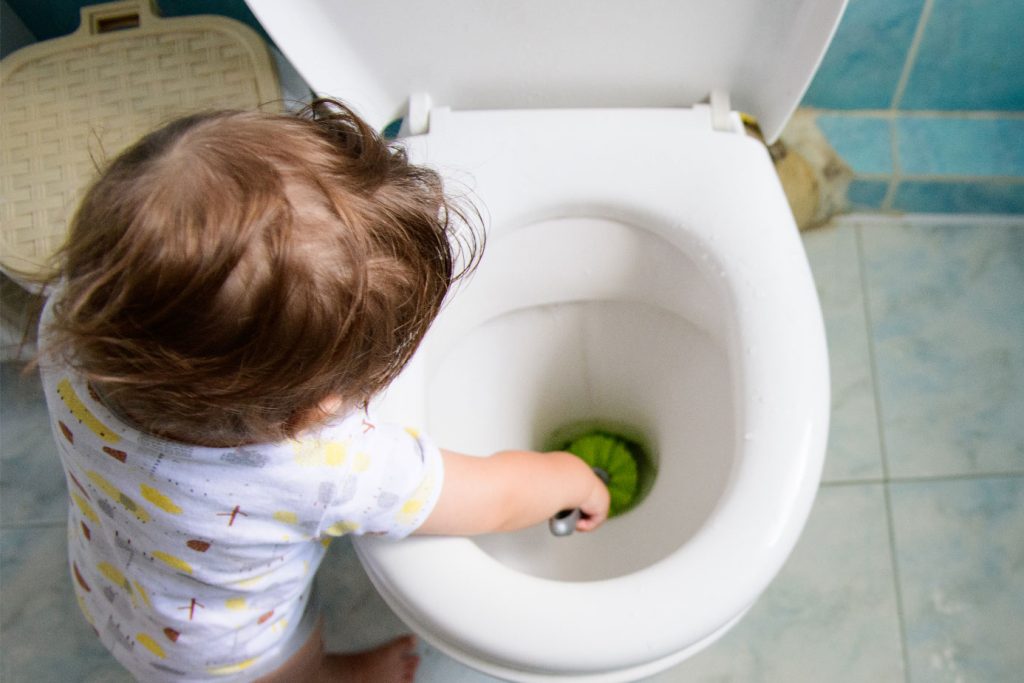
Plumbing Safety for Children
Young children are fascinated by plumbing fixtures. A gentle tug on a toilet handle produces loud noises and a rush of water that swallows the contents of the toilet bowl. A turn of the faucet handle yields an endless river of warm or cold water. An empty bathtub transforms into a mini-water park for the nightly bath.
However, these sources of enjoyment, cleanliness, and sanitation can also create a severe water damage dilemma if improperly used. Bathroom leaks can spell disaster.
You can prevent these costly and disruptive water damage incidents by educating your children with age-appropriate principles for plumbing use.
Problems like these are already bad enough but causing a plumbing fiasco while visiting family or friends can be highly embarrassing to the children and you.
By teaching your children best practices for the care of the plumbing system, you take steps to prevent water damage and save yourself from massive headaches. Three factors are critical when educating your children about plumbing:
- Begin early
- Reinforce the principles with practice
- Reward success
Listed below are four crucial plumbing lessons children can learn and the recommended age for beginning each task.
Lesson #1: What Goes in the Toilet
Target age: Preschool age and up
Flushing toys and other objects is highly unsanitary, especially if your child has their face directly over the toilet bowl. Foreign objects in the toilet will cause severe plumbing problems that can disrupt any area throughout the entire drain system, even leading to a costly sewage backup. Only toilet paper and things designed for toilets to flush should go into the toilet.
Even adults make mistakes and flush clog-causing items down the toilet. These items include:
- Diapers
- Hair
- Q-Tips and Dental Floss
- Paper Towels and Facial Tissue
- Feminine Products
- Non-Flushable Wipes
Toilet paper is specially engineered to take care of business and dissolve when flushed. Children should be aware that flushing too much toilet paper at once can clog the toilet, leading to the next lesson.
Lesson #2: How to Unclog a Toilet With a Plunger After a Backup
Target age: 12 years and up
Knowing how to use a plunger is a plumbing necessity. Encourage your children not to panic if the toilet clogs. It is a fairly common occurrence. Remind your children to plunge, then flush. Flushing before plunging can lead to a toilet overflow.
Supervision is strongly advised until your children are comfortable handling this task. Should the plunging efforts fail and the toilet begins to backup, you should teach your children to stop the water flow to the toilet immediately.
Lesson #3: What Goes in the Garbage Disposal
Lesson #4: How to Turn off the Main Water Valve
Target age: 12 years and up
To prevent widespread water damage from a sudden leak, everyone old enough in your home should know the location of the home’s main water valve. Your younger children may not have the strength or motor skills to operate the valve, but they can direct a neighbor or family friend to the water main.
Conduct an exercise with your children, showing them the exact location of the valve and how to shut it off. Let them try it a few times so they will have the confidence to act in an emergency.
Bonus Tip: It would be helpful to place the contact information of a pre-qualified water damage restoration company in a prominent, easily accessible place. One call can summon a competent, trusted, and vetted restoration crew in a property damage emergency.







